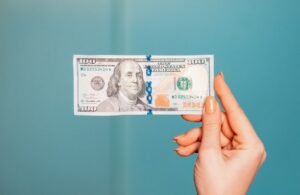Maximizing Profit with the Best Leverage for Your Forex Trades
When it comes to trading in the forex market, leverage plays a crucial role in determining the potential profit or loss. Leverage allows traders to control a larger position in the market with a smaller amount of capital. However, it is essential to understand the concept of leverage and use it wisely to maximize profits and manage risk effectively.
What is Leverage in Forex Trading?
Leverage is a tool provided by forex brokers that allows traders to magnify their trading positions using borrowed capital. It is expressed as a ratio, such as 1:50, 1:100, or even higher, which indicates the amount of leverage a broker offers.
For example, if a trader has a 1:100 leverage, it means that for every $1 in the trader’s account, they can control a position of $100 in the market. This magnification of trading positions can result in significant profits, but it also amplifies potential losses.
Understanding the Risks
While leverage can be a powerful tool for increasing potential profits, it is important to recognize the risks associated with it. The higher the leverage, the greater the potential for both profits and losses. Traders must be cautious and use leverage wisely to avoid wiping out their trading accounts.
Using the Best Leverage for Your Trades
Choosing the right leverage for your forex trades is crucial to maximize profit and manage risk effectively. Here are some factors to consider when determining the best leverage for your trades:
1. Risk Tolerance: Assess your risk tolerance before deciding on the leverage. If you are a conservative trader who prefers to minimize risk, lower leverage ratios like 1:10 or 1:20 might be more suitable. On the other hand, if you are an experienced trader who can handle higher risk, higher leverage ratios like 1:50 or 1:100 may be appropriate.
2. Trading Strategy: Your trading strategy should also influence your choice of leverage. If you are a short-term trader who aims to make quick profits from small price movements, higher leverage can help amplify those gains. Conversely, if you are a long-term trader who focuses on larger trends, lower leverage might be more suitable.
3. Account Size: The size of your trading account is another crucial factor. Generally, traders with larger account sizes can afford to use higher leverage ratios, as they have more capital to withstand potential losses. Conversely, traders with smaller account sizes should be more cautious and consider lower leverage ratios to protect their capital.
4. Market Volatility: Different currency pairs exhibit varying levels of volatility. Highly volatile pairs can experience large price swings, which can result in significant gains or losses. If you are trading a highly volatile currency pair, using lower leverage may be prudent to manage the inherent risk.
5. Education and Experience: Novice traders should be cautious when using high leverage ratios, as it requires a deep understanding of risk management and market dynamics. It is advisable for new traders to start with lower leverage and gradually increase it as they gain experience and confidence.
Conclusion
In conclusion, leverage is an essential tool in forex trading that can significantly amplify profits, but it can also magnify potential losses. To maximize profit and manage risk effectively, traders must choose the best leverage for their trades based on factors such as risk tolerance, trading strategy, account size, market volatility, and their level of education and experience. By using leverage wisely, traders can enhance their trading performance and increase their chances of success in the forex market.





